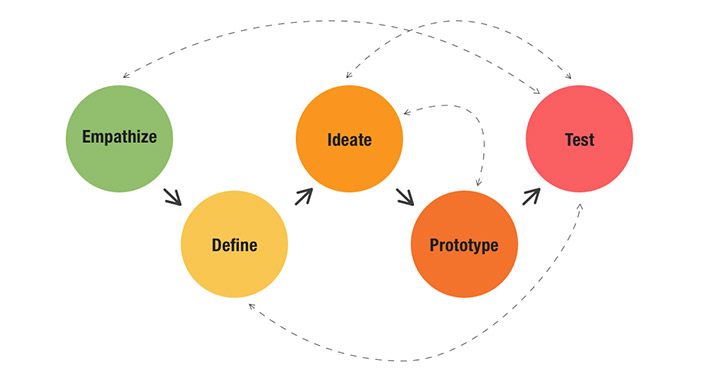

ACL Digital
7 Minutes read
Why Design Thinking Can Help Your Organization to Succeed in Digital Transformation
Digital transformation has become a reality for all industries. In the current business ecosystem, to stay ahead of competitors organizations need to have enhanced operational performance, high profitability, and better customer satisfaction.
For successful digital transformation, organizations must nurture the following key factors
- Innovate their Business and Technology
- Invest in understanding customer behaviors and demands
- Improve their ability to sustain in the changing economy, regulatory laws, and market competition
Organizations struggle to succeed
According to a study by digital transformation experts, out of 8 only 1 organization is able to successfully implement digital transformation. There are ranges of failure where more than 50 percent didn’t go right at all.
Most organizations fail because of the following reasons
- They set up unrealistic expectations and focus only on technology, not on their actual goals
- They have weak interaction between the business and the technology teams. With each team operating in their silos, they don’t align with customer expectations
- They use the waterfall method to solve problems which implies creating solutions early and executing the solution, increasing the cost to deliver
- Increase in customer expectations due to the usage of innovative products available in the market
To overcome these obstacles, organizations need to adopt the Design Thinking approach. The design thinking process helps organizations to nurture the critical factors of their transformation.
What is Design Thinking?
Design Thinking is a design methodology that offers a solution-based approach to solve problems. It identifies and solves unknown problems by
- Understanding human needs
- Reframing the problems in human-centric ways
- Creating many ideas and utilizing prototypes and testing
Why Design Thinking?
The term ‘design thinking’ isn’t limited to designers only. It involves a team from a different discipline who works on a product or influences the outcome.
The most important thing about the process is its ability to shift the way organizations think and work. Design thinking is not just a method, it is a mindset.

Design Thinking is an excellent tool for both designers and non-designers alike. It is ideal for breaking down barriers and encouraging collaboration between different teams.
The core principles on which the Design Thinking process is based on are
- Collaborating with the multidisciplinary teams
- Developing a deep understanding of the people (customers, business, partners, etc.) based on research data
- Defining the goal to make everyone aware of what the organization intends to achieve
- Being flexible in generating ideas and testing them with the users
Stages of Design Thinking
According to the Hasso-Plattner Institute of Design at Stanford, there are five stages of Design Thinking, namely Empathize, Define, Ideate, Prototype and Test.

Empathize
Empathy is a crucial factor in Design Thinking. It allows the team to set aside assumptions about the customers. An empathetic mindset not only allows the team to identify and relate to the customer needs but also gives insights into an individual’s needs within the group.
The Empathy stage involves discussing within the team members from different disciplines to find out more about the area of concern. It allows the team to gain a deeper personal understanding of the issues involved, customer behaviors, and their demands. In this stage, the team can observe, engage, and empathize with people to understand their experiences and motivations.
Define
In this stage, the team needs to put together the information collected in the empathize stage. This stage requires them to define the problem as a problem statement from a human-centric perspective.
For example, the problem written as “We need to increase our sales team performance by 10%,” can be re-written in a human-centric way such as, “Salesperson needs to sell the products better to improve his performance.”
The Define stage helps the team to establish goals, functions, and any other elements that will allow them to solve the problem. This stage makes each team member recognize and focus on mutual goals.
Ideate
The ideation stage is where the team can start generating ideas, as they have insights on the people involved. By thinking outside the box, the team can identify new solutions to their defined problem statement.
The ideation phase helps to investigate and test the ideas that can be a way to solve a problem or finding the factors that are required to overcome the problem.
Prototype
The technical team or a panel of design experts can produce many inexpensive, low-detailed versions or specific features found within the product or service. This enables them to investigate the solutions generated in the previous stage.
The advantage of prototypes is that the team members can share it and test it within the team, in different disciplines, or with people outside the team. In this phase, it is easy to try and identify the best possible solution to the problems that are already defined during the other stages.
Test
In the Test stage, evaluators such as designers or experts can test the complete product/service using the best solutions identified during the prototyping phase.
It is an iterative process and the results generated during the test can reframe one or more problems or discover new problems. The results often inform about the end-users or customers. The team will get more insights into the usage patterns, how people think, behave, and feel.
Conclusion: How does Design Thinking help?
Following the Design Thinking process, organizations can create any product or service that people require and would love to use. Design Thinking brings a cultural change along with a unique mindset within the team and a continuous learning exercise that helps in discovering solutions as a team. Every industry with any kind of work environment can make use of this process to derive maximum output from their digital transformation strategy.
Design thinking helps the organization to transform both in the areas of technology and business by understanding the needs of the people. It can also enlighten the organizations towards achieving a disruptive growth.
About our Team
The Digital Experience team at ACL Digital helps organizations to innovate and transform, adding value to both the business and the technical aspects.
We follow the human-centric approach in providing solutions and leverage design thinking methods to solve complex problems. We recommend our clients to take part in the design thinking workshops to get their people aligned with their transformation goals.
The workshop recommended is the kick-off for the design phase of a project. We apply the human-centric design principles to diverge on the research about the goals of the project and converge on defining and reframing the problem. Then we ideate for different solutions and find the best-suited solution.
We follow the Lean UX framework for creating functional prototypes. The prototype undergoes iterations for the best solutions within the time, budget, and technical limitations.
We’ve been a firm advocate of human-centric design in improving business value. There’s no better way to transform the business than creating solutions for people’s needs.
Design thinking is not a magic wand that can fix everything, and also not every problem requires a follow-through of the entire process, but it certainly provides a solution-based mindset to tackle problems.





